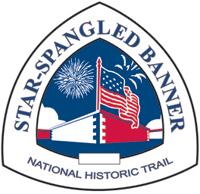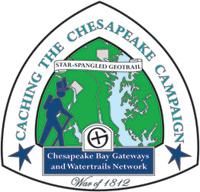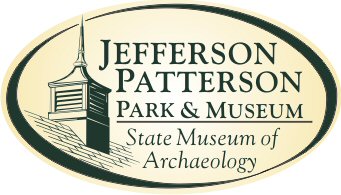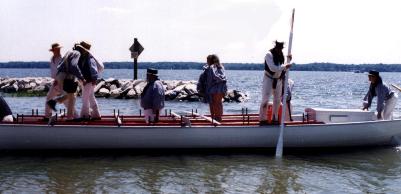During the first challenge along the Star-Spangled Banner GeoTrail, over 400 first edition SSB geocoins were awarded. We would like to thank everyone who participated in the Star-Spangled Banner GeoTour. We are currently out of geocoins but stay tuned for other opportunities along the Star-Spangled Banner GeoTour!


Come on a journey to remember and commemorate the dramatic chain of events, people and places that led to the birth of our National Anthem.
The story of the Star-Spangled Banner was shaped by the events of the Chesapeake Campaign during the War of 1812. From February 1813 until February 1815, the Chesapeake Bay was the center of a fierce struggle between the British and Americans. Places and landscapes still exist today that provide a touchstone to the past. The trail traces events and related sites that figured prominently in the Chesapeake Campaign of the War of 1812 that have national significance, physical integrity, and the potential for contemporary recreation and interpretation.
Effective 2012, the Park is now open 7 days a week from 9-5.

Jefferson Patterson Park is a treasured historic park with miles of hiking trails. This simple puzzle cache will lead you down a paved trail past the Native American Villiage. The final is a short distance away.
One of Maryland’s largest naval engagements of the War of 1812 took place in and around the site of Jefferson Patterson Park and Museum (JPPM). It was here, in the early summer of 1814 on St. Leonard Creek, that the British sought to destroy Commodore Joshua Barney’s upstart Chesapeake Flotilla, a squadron of barges that had proven to be an unexpected threat to their naval dominance.
The fighting, in what would come to be known as the First Battle of St. Leonard Creek, began on June 8, 1814, with a series of skirmishes. Deciding that the larger British vessels would overpower his Flotilla on the open water of the Patuxent River, Barney moved his fleet into the creek. On June 10, he took the offensive, unleashing a barrage at the advancing British warships. This forced them to retreat back to the creek’s entrance, giving the Americans the surprise offensive for at least a few hours. In the end, the Battle had no clear winner, but did result in the British pursuing a strategy of keeping the Flotilla blockaded in the creek, while plundering tobacco ports and farms along the Patuxent.

The Barney Barge, a replica of one of the war barges of the Chesapeake Flotilla.
A few weeks later, the two sides would clash again during the Second Battle of St. Leonard Creek. During this meeting, British ships, boats, and rocket barges once again fought against the Flotilla barges supported by gun batteries mounted on what is now JPPM property. Museum lands also served as a mustering ground for militia, army, and marines that had marched to the creek, to support the Flotilla in its attempt to break free of the blockade. A combined attack from the battery and the flotilla commenced at daybreak on June 26, and eventually allowed Barney to row his way out of the creek and up the Patuxent.
The park grounds were owned by John Stuart Skinner, who lost a barn and some merino sheep to British raids in June 1814. As purser of the Flotilla, Skinner was responsible for handling money onboard the ships. He is also known for leading a Paul Revere-like ride to warn the U.S. Capital of the approach of the British in August 1814 and served as Agent for Exchange of Prisoners. In the latter capacity, he was sent by President James Madison, along with Francis Scott Key, to seek the release of Dr. William Beanes, who had been arrested by the British during their march back through Upper Marlboro. This, in turn, was the reason that both Skinner and Key were on a British ship in Baltimore Harbor during the Battle of Baltimore, a scene which led Key to write the poem that became "The Star-Spangled Banner."
Jefferson Patterson Park and Museum is a state history and archaeology museum exploring the changing cultures and environment of the Chesapeake Bay region of the past 12,000 years. Visitors can investigate thousands of years of human history by touring archaeological sites and trails, acres of working farmland, restored farm buildings and museum exhibits, and by attending educational programs. More than 70 archaeological sites have been identified, from the prehistoric period 9,000 years ago through the 20th century. JPMM offers many special programs throughout the season, including heritage celebrations, children's activities, tours, concerts, dances, lectures, and educational programs. JPPM also provides preservation services and artifact conservation; and conducts important archaeological research. The Museum is the proud home of the Maryland Archaeological Conservation Laboratory.
At the posted coordinates,
locate the date associated with Captain John Smith, this will be ABCD.
Locate the date associated with Robert Beverly,
this will be EFGH.
To find the coordinates to the final: N 38 23.9HA W 076 30.FHC

Thanks to the Calvertcachers for helping with this hide and to the Maryland Geocaching Society for assisting with this project!